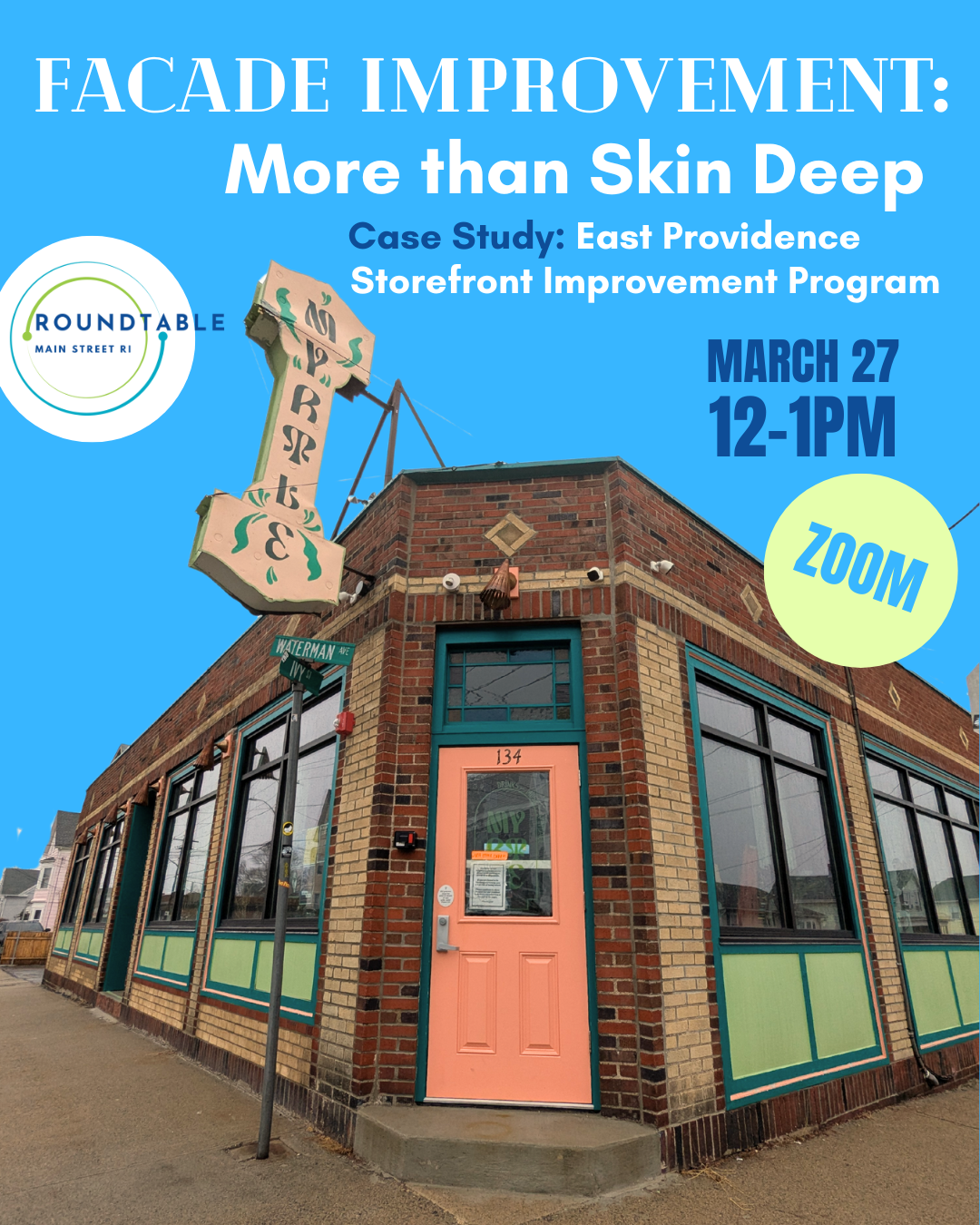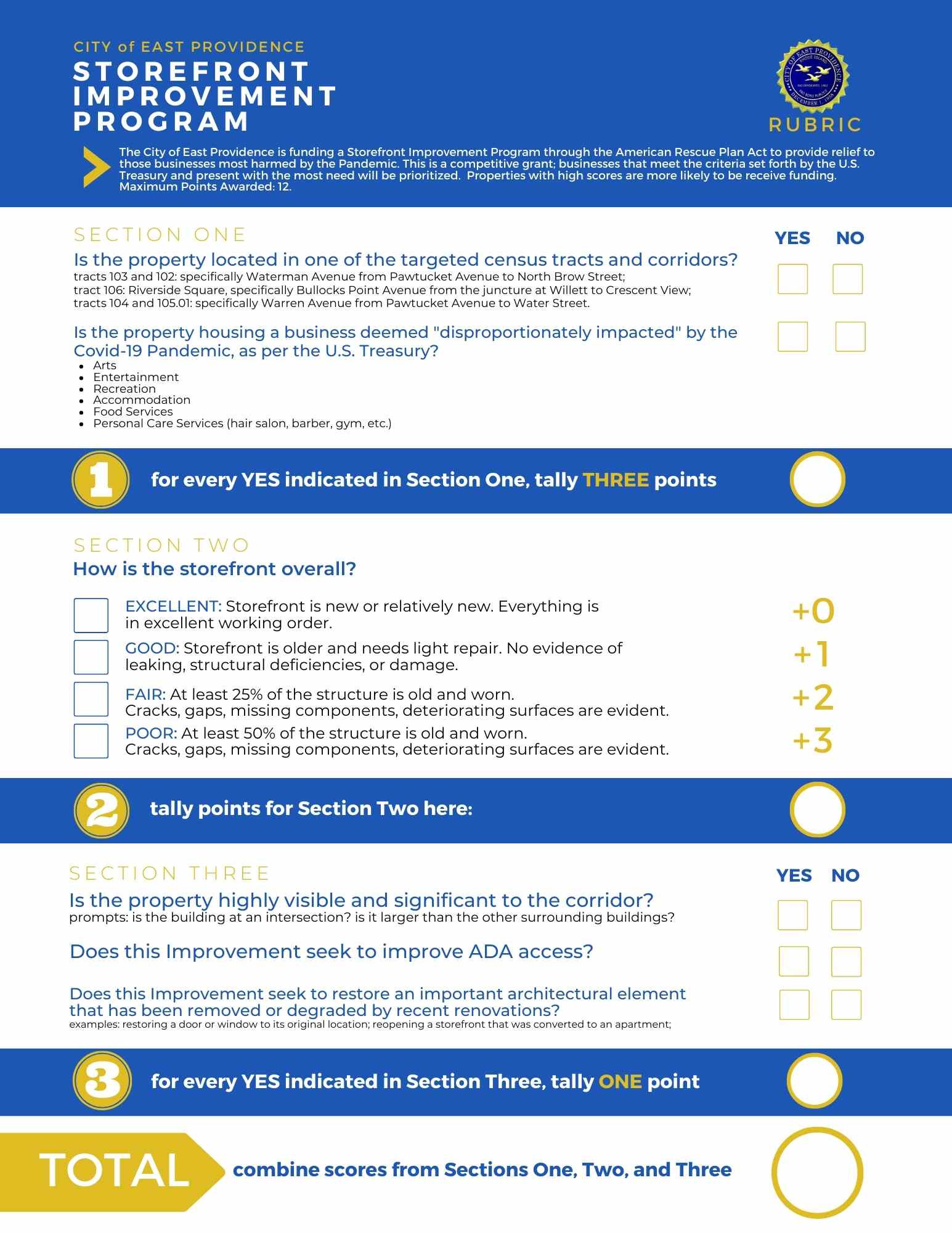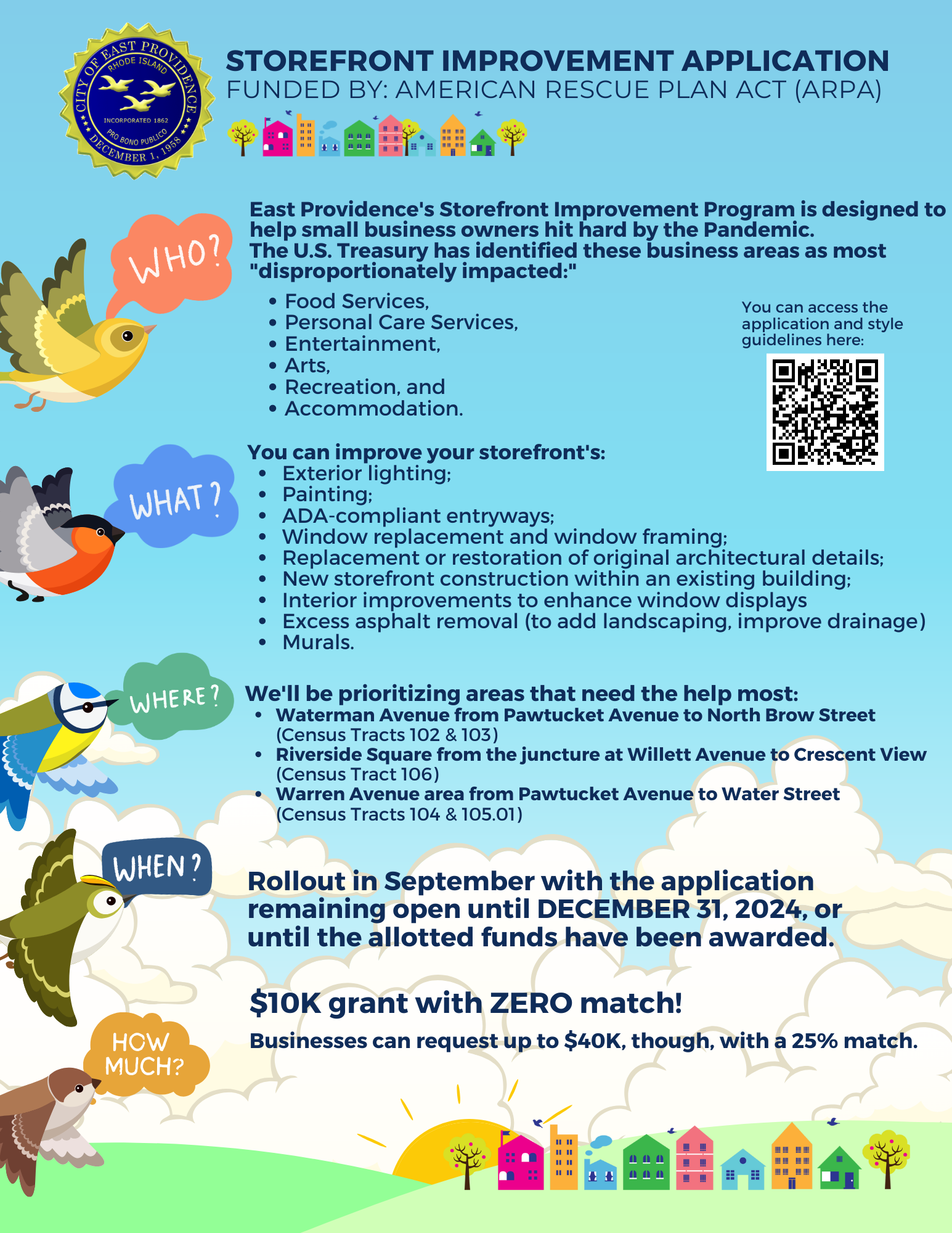ROUNDTABLE
Facade Improvement: More Than Skin Deep!
Case Study: East Providence Storefront Improvement Program
12:00 noon — 1:00pm
Presenter: Tristan Jimerson, Business Development and Economic Opportunity Coordinator for East Providence
Are you looking to improve foot traffic on your Main Street? Bring new energy, preserve and beautify your commercial district? Improvements to building exteriors can increase the sales of the businesses located inside while contributing to a more vibrant and attractive neighborhood.

So let’s talk storefront and facade improvement! And where better to turn than to East Providence where they recently wrapped up a storefront improvement program using funds awarded to the City by the American Rescue Plan Act (ARPA) in response to the COVID-19 pandemic. In our April Roundtable we heard from East Providence’s Business Development and Economic Opportunity Coordinator, Tristan who ran the program.
KEY LESSONS
Here are some major takeaways from the East Providence Storefront Improvement Program case study
Embrace the Gift Card Effect
In addition to the 25% match, recipients were often motivated to take on additional building repairs and projects. Some grantees spent 20-30k over what their match was to update interiors, roofing, windows, and more. The initial investment by the city was more than worthwhile.
Word of Mouth Works!
Grant applications from business owners spiked after a noticeable project was completed in the community. Word of mouth was the most effective way to reach business owners.
Focus on the Visuals
$10,000 projects can have just as much impact as $40,000 ones. Projects updating signage or adding murals received the most positive feedback from community members and resulted in more grant applications from business owners.
Weigh Cost with Visual Impact
Typically, windows or an updated parking lot are expensive and have limited effects on the visual environment. In specific cases, such as a new glass façade exhibiting arrangements in a flower shop, the project might be worth it. Examine each project and balance cost with visual impact.
Fine-Tune Recipient Targeting
Given budget constraints, it can be valuable to focus efforts and funding on one or two Main Streets. Restoring adjacent storefronts helps maximize visual impact.
Be Wary of Upfront Disbursement…
Cancelled projects and contractor delays can lead to clawback headaches. Once the money is out there, it’s harder to get it back. On the other hand, for businesses with smaller budgets, an upfront disbursement structure serves as a valuable motivator to apply for the grant. There are pros and cons to this structure, but a good rule of thumb is to disburse the first payment at 50% completion, once everyone is committed and the work has started.
Non-Reimbursement Grants Have Limitations
The grant provided by the East Providence Storefront Improvement Program was a non-reimbursement grant. Challenges arose when new businesses struggled with lead time and pushed forward on work before grant approvals had come through, leaving them ineligible for grant funding on that project. Its important to effectively communicate with businesses the limitations of the grant structure.
Trustworthy Vendors Matter
Oftentimes, businesses do not know trustworthy muralists, sign-makers, or other contractors, and aren’t used to asking for bids. This can lead to contractor issues down the line. If possible, provide a list of trustworthy vendors to the businesses.



